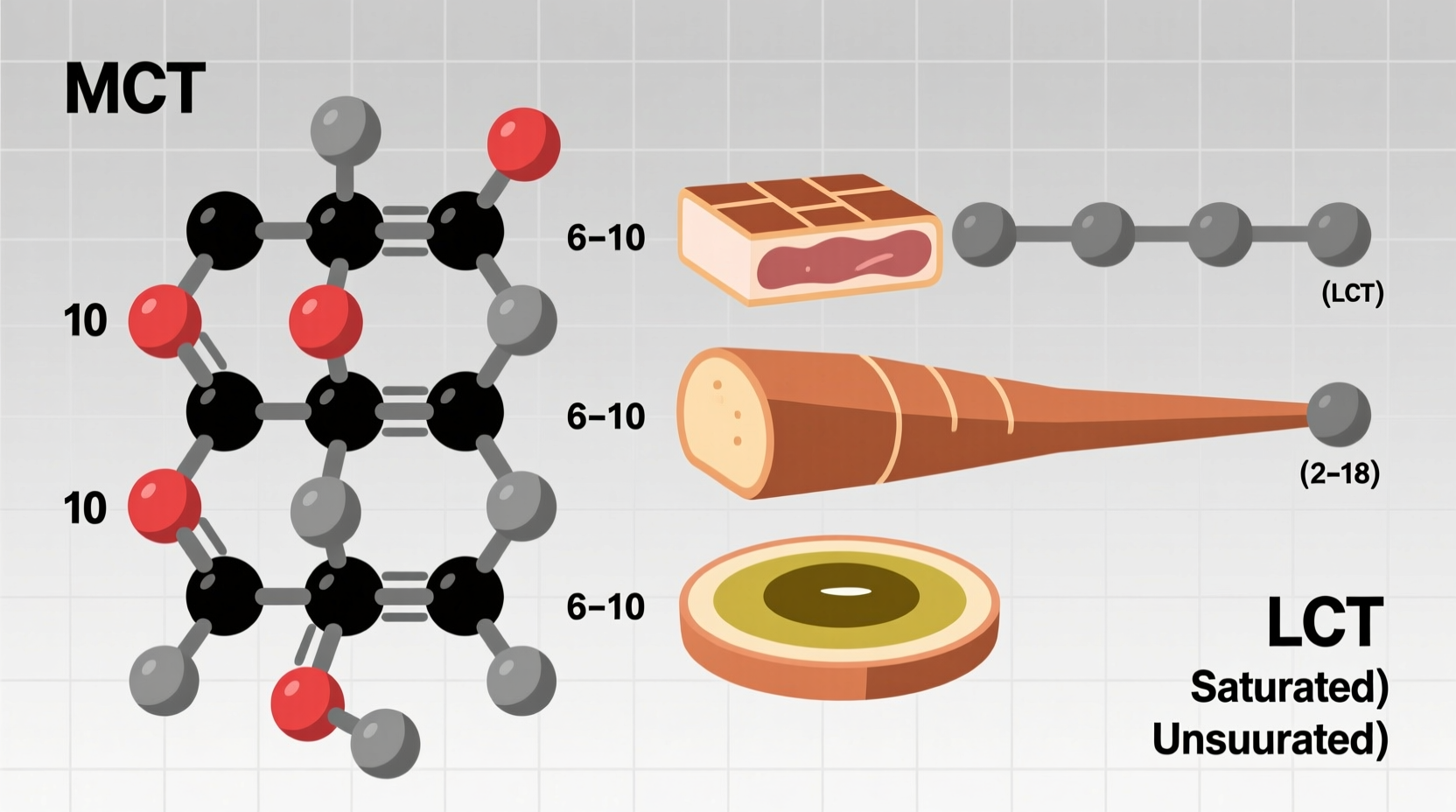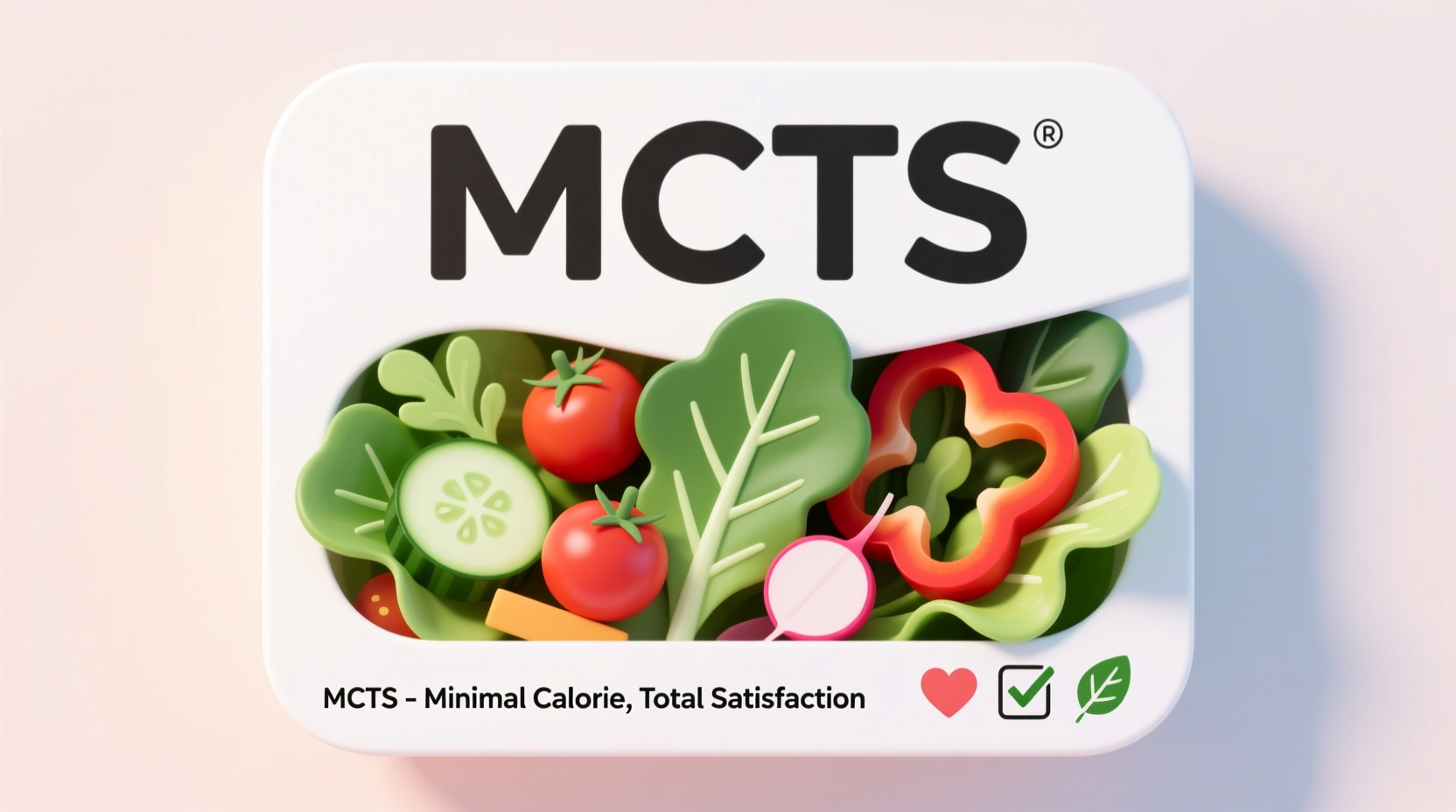Understanding MCTs: The Science Behind the Fat
When you search what are mcts in food, you're likely seeking clarity about these increasingly popular dietary components. MCTs represent a distinct category of saturated fats characterized by their medium-length carbon chains (6-12 atoms), which fundamentally change how your body processes them compared to common long-chain triglycerides (LCTs) found in most fats.
The four primary MCT varieties each offer unique properties:
- C6 (Caproic acid) - Rare in foods, primarily used in supplements
- C8 (Caprylic acid) - Rapidly converted to ketones, popular for cognitive benefits
- C10 (Capric acid) - Balanced absorption rate, commonly found in coconut oil
- C12 (Lauric acid) - Technically an MCT but metabolizes more like LCTs, abundant in coconut products
Natural Food Sources and Concentrations
While MCT oil supplements dominate health food stores, several whole foods naturally contain these unique fats. Understanding their natural distribution helps make informed dietary choices without relying on processed products.
| Food Source | MCT Content | Primary MCT Types | Practical Serving Size |
|---|---|---|---|
| Coconut oil | 60-65% | C8, C10, C12 | 1 tablespoon (14g) |
| Palm kernel oil | 50-55% | C8, C10, C12 | 1 tablespoon (14g) |
| Butter (grass-fed) | 10-15% | C8, C10 | 1 tablespoon (14g) |
| Whole milk | 8-10% | C8, C10 | 1 cup (240ml) |
| Hard cheeses | 10-12% | C8, C10 | 1 ounce (28g) |
According to USDA FoodData Central, coconut products deliver the highest natural MCT concentrations. The National Library of Medicine confirms that lauric acid (C12) comprises about 50% of coconut oil's MCT content, while caprylic (C8) and capric (C10) acids make up most of the remainder (USDA FoodData Central).
How Your Body Processes MCTs Differently

The metabolic journey of MCTs differs significantly from conventional fats. When you consume long-chain triglycerides, they require bile for emulsification and undergo complex processing before entering your bloodstream. MCTs bypass this entire pathway.
MCT Digestion Timeline
- 0-15 minutes: MCTs move directly to the liver via the portal vein without lymphatic system involvement
- 15-30 minutes: Liver converts MCTs into ketones for immediate energy
- 30-60 minutes: Ketone levels peak in bloodstream, providing fuel for brain and muscles
- 2-4 hours: Complete metabolism without being stored as body fat
This accelerated processing explains why athletes use MCT oil before workouts and why ketogenic dieters incorporate them. Research published in the Journal of Nutrition demonstrates that MCTs increase energy expenditure by 5% compared to LCTs, potentially supporting metabolic health (Journal of Nutrition).
Practical Applications in Daily Eating
Understanding what are mcts in food becomes valuable when applying this knowledge practically. Here's how to incorporate them effectively:
Cooking Considerations
MCT oil has a low smoke point (320°F/160°C), making it unsuitable for high-heat cooking. Instead:
- Add to smoothies after blending
- Mix into salad dressings
- Stir into coffee or tea
- Use in no-cook recipes like energy balls
Dietary Integration Strategies
For those following specific eating patterns:
- Ketogenic diets: 1-2 tablespoons daily helps maintain ketosis
- Athletic performance: Consume 30 minutes pre-workout for sustained energy
- Digestive issues: Start with 1 teaspoon daily if managing fat malabsorption
Important Context and Limitations
While MCTs offer benefits, they're not universally appropriate. Understanding these context boundaries prevents misuse:
- Digestive sensitivity: Consuming more than 2 tablespoons at once may cause gastrointestinal discomfort in 30% of people according to clinical observations
- Caloric density: At 8.3 calories per gram (vs 9 for other fats), they're still high-calorie
- Dietary balance: Shouldn't replace all dietary fats - essential fatty acids from other sources remain crucial
- Medical conditions: Those with liver conditions should consult physicians before regular consumption
Common Misconceptions Clarified
The growing popularity of MCTs has spawned several myths. Let's clarify with evidence:
- "MCT oil is the same as coconut oil" - False. While coconut oil contains MCTs, commercial MCT oil is fractionated to concentrate specific chains (C8/C10)
- "MCTs don't count as calories" - False. They provide slightly fewer calories per gram but still contribute to energy intake
- "All MCTs create equal ketones" - False. C8 produces 3x more ketones than C12 according to metabolic studies
Practical Implementation Guide
Ready to apply this knowledge? Follow this simple progression:
- Start with natural sources: Add 1 tablespoon coconut oil to cooking
- Monitor tolerance: Note any digestive changes over 3-5 days
- Consider concentrated forms: If benefits observed, try MCT oil
- Optimize timing: Use before physical or mental activities needing energy
- Maintain balance: Keep MCTs as 5-10% of total fat intake











 浙公网安备
33010002000092号
浙公网安备
33010002000092号 浙B2-20120091-4
浙B2-20120091-4